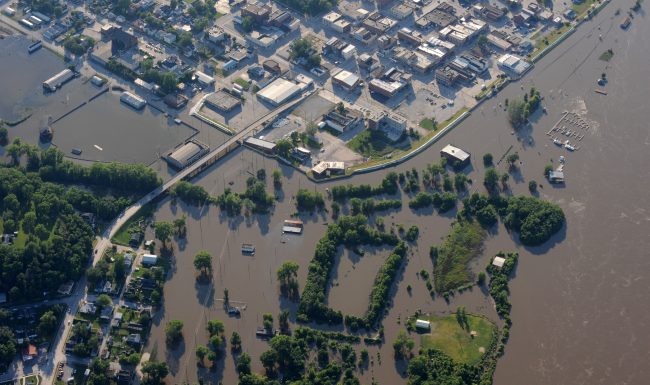February Floods are a Timely Reminder to Plan for Flood Emergencies
A series of storms in February dumped heavy rain on parts of central and southern U.S., causing damaging floods along the Ohio and Mississippi rivers.
“Roughly 70 rivers were in flood stage as of midday Monday in the central USA, the National Weather Service said. Overall, more than 250 river gauges reported levels above flood stage from the Great Lakes to Texas,” according to USA Today (2/26/18).
These recent floods are a timely reminder that flooding can happen at any time. Floodproofing a structure with flood barriers, flood doors, flood logs or other mitigation solutions is important, but not enough to ensure protection when a flood hits (read more about common sense flood prep). A flood emergency operational plan is highly recommended for all floodproofed buildings, and may even be required in some communities.
Flood Emergency Operational Plan
Flood emergency operational plans include information about floodproofing measures during and after floods. For example, equipment that requires electricity, such as a sump pump, needs to maintain power through the flood event. The plan outlines how often to practice for a flood, who is responsible for the plan, and any underlying assumptions.
The plan should do the following:
- Establish a chain of command and assign responsibilities to each person involved in the installation and maintenance of floodproofing measures.
- Delineate notification procedures for all personnel.
- Assign duties and include the locations of flood panels and barriers, with their installation and repair procedures.
- Include evacuation instructions for all personnel who normally occupy the building, and for personnel who will install the flood barriers.
- Provide a periodic drill and training program to make sure the personnel clearly understand the procedures and time required to implement floodproofing measures and complete evacuation.
- Define a schedule for regular evaluation and update of the flood emergency operational plan.
Inspection and Maintenance Plan
In addition, an inspection and maintenance plan should be in place for all flood-protected enclosures and areas. At a minimum, this plan should inspect:
- Wall systems for cracks in the structure or waterproofing coatings around flood doors and barriers.
- Entire floor slab for settlement or other cracks.
- Openings to clear debris and check for damage
- Flood panels for damage to the panels or gaskets and to verify that proper labels are visible for location and operation.
- Backflow and shutoff valves to ensure they operate properly.
- Drainage, emergency power/generator and pump systems to ensure there is no damage to piping or debris that would prevent the pipes from draining properly.
- Flood emergency equipment, supplies and required tools to ensure that all required items are available in the event of a flood.
With more rain in the forecast and a nor’easter predicted for the East Coast, now is the time to review flood emergency operational, inspection and maintenance plans. For more information on flood mitigation planning, visit www.floodpanel.com.


